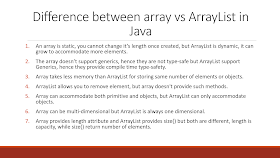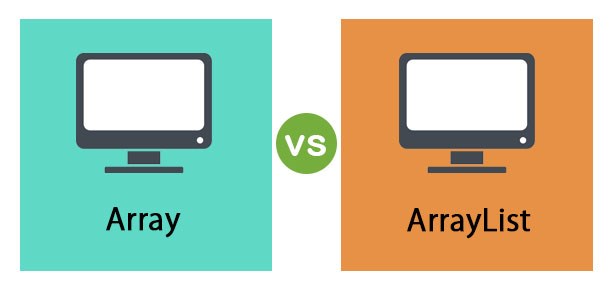

In fact, the ArrayList was specifically designed to replace the low-level array construct in most contexts. For example, if you realize you need synchronized access, you can change the implementation to a Vector without rewriting all your code. Access speed is virtually identical to an array, with the additional advantages of being able to add and subtract elements to a List (although this is an O(n) operation with an ArrayList) and that if you decide to change the underlying implementation later on you can. This separation of Abstract Data Type and specific implementation is one the key aspects of object oriented programming.Īn ArrayList implements the List Abstract Data Type using an array as its underlying implementation. You should declare the strings as a List, and then initialize it using the ArrayList implementation. Remember that in Java a List is an abstract, not a concrete data type. Comparison of ArrayList and LinkedList Implementations Fetching Elements With get() ArrayList.The Java way is that you should consider what data abstraction most suits your needs. The second pointer, tail, points to the last element and is likewise updated whenever a new element is added at the end. The first pointer, head, points to the first element and is updated whenever a new element is inserted at the beginning.

The first node has no previous node and the last node has no next node.įinally, in the case of a linked list, we can assume the existence of two pointers which continuously monitor the first and the last elements of the list. Each node contains its element and two pointers: a link to the previous node and the link to the next node.

The entire list structure thus consists of mutually connected nodes. In order to store element B, it's not enough to just store its value as you would with an ArrayList.Ī pointer to the previous and the next element is also needed in order for the linked list to be traversable. It is a small internal class that serves as a wrapper around each element. LinkedList needs a custom data structure. The fifth element, for example, points both to the fourth element and the sixth element.ĪrrayList contains a single array for data storage. Since this is a doubly-linked list, each element also points to its predecessor. The first element points to the second one, which points to the third one, and so forth. LinkedList doesn't have an array but a double-ended queue of mutually-connected elements instead. If an element is removed, the size is decreased. If an element is added, the size is increased. This means that ArrayList internally contains an array of values and a counter variable to know the current size at any point. A LinkedList is a doubly-linked list/queue implementation.

Inner Workings of ArrayList and LinkedListĪn ArrayList is a resizable array that grows as additional elements are added. However, the LinkedList also implements the Queue interface. Since it's an interface, it simply provides a list of methods that need to be overridden in the actual implementation class.ĪrrayList and LinkedList are two different implementations of these methods. In Java, List is an interface under the java.util package. Lists oftentimes go hand in hand with other mechanisms such as Java Streams which offer simple yet effective ways for iteration, filtering, mapping, and other useful operations. They are convenient because they enable easy manipulation of elements (such as insertion or fetching) and simple iteration of the entire collection. Lists are therefore ordered collections (unlike sets) which also allow duplicates. This means that each element of the list has both a predecessor and a successor (except the first and the last, of course - they only have one of each). Lists are data structures used for sequential element storage. Knowing which implementation of a List to use in which situation is an essential skill. In this article, we'll go through both of these implementations, observe their inner workings and discuss their performance. Should you choose an ArrayList or a LinkedList? What's the difference between these two? In Java, a common question when using a List implementation is: Lists are some of the most commonly used data structures.


 0 kommentar(er)
0 kommentar(er)
